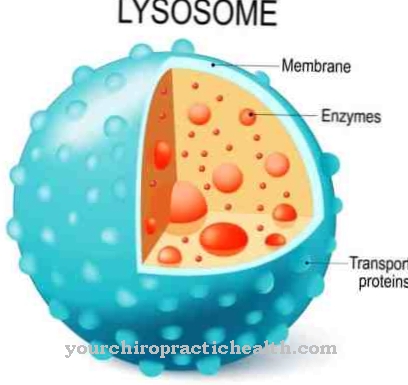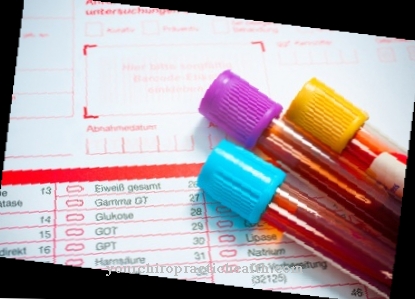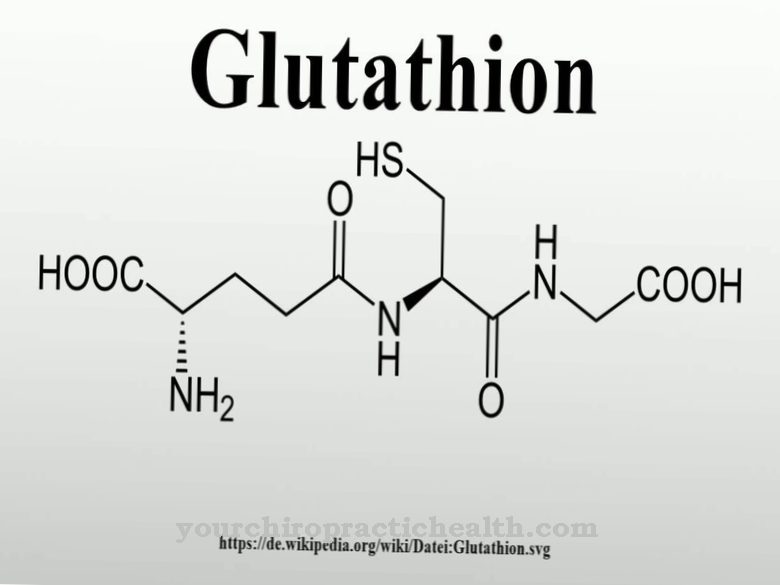Guanosine is the nucleoside of the purine base guanine and is formed by the addition of the simple sugar ribose. If deoxyribose rather than ribose is added, it is deoxyguanosine.
Guanosine is part of the helices and double helices of RNA. The analogue deoxyguanosine is part of DNA. As guanosine triphosphate (GTP) with three attached phosphate groups, guanosine is an important energy store and donor of phosphate groups within the citrate cycle in the mitochondria of the cells.
What is guanosine?
Guanosine is the nucleoside of the purine base guanine. It is created by the addition of a ribose group via an N-glycosidic bond. In the case of the analogue deoxyguanosine, the attached pentose consists of the deoxyribose group.
Guanosine and deoxyguanosine are components of the single and double helices of RNA and DNA. The complementary base forms the pyrimidine base cytosine or its nucleoside cytidine and deoxycytidine, to which guanosine is linked as a base pair with a triple hydrogen bond. With additionally attached phosphate groups, guanosine forms an important functional part of the so-called citric acid cycle within the respiratory chain as guanosine diphosphate (GDP) and as guanosine triphosphate (GTP).
It is a chain of catalytically controlled processes within the energy metabolism that takes place in the mitochondria of the cells. GTP serves as an energy store and phosphate group donor. Under the action of a certain enzyme, GTP can be converted into cyclic guanosine monophosphate by splitting off two phosphate groups, which has a special role in the transmission of signals within the cell. In a slightly modified form, the GTP takes on the transport tasks of what is known as Ran-GTP for the necessary transport of substances between the cell nucleus and cytosol, overcoming the cell membrane.
Function, effect & tasks
The double and single helices of the genetic material DNA and RNA consist of a chain of only four different nucleobases, of which the guanine and adenine bases are based on the purine skeleton, which consists of a five and a six-membered ring.
The two bases cytosine and thymine embody pyrimidine bases with an aromatic six-membered ring. The nucleobase uracil must be seen as an exception, which is almost identical to thymine and takes the place of thymine in RNA. However, the long chains of the helices do not consist of unchanged nucleic acids, but of their nucleotides. The nucleobases are converted into riboses or deoxyriboses by the addition of a ribose group (RNA) or a deoxyribose group (DNA), and the corresponding nucleotide is transformed by the addition of one or more phosphate groups. In the case of guanine, it is guanosine monophosphate or deoxyguanosine monophosphate, which is incorporated as a link in the long-chain helices of RNA and DNA.
As a component of DNA and RNA, guanosine - like the other nucleotides - does not have an active role, but instead encodes the corresponding proteins that are synthesized in the cell via copies of the DNA strand. Guanosine plays an active role in the form of GTP and GDP in the citric acid cycle within the respiratory chain as a phosphate group donor. In the modified form of guanosine monophosphate, the nucleotide also takes on an active role and acts as a messenger substance for intracellular signal transport, which is particularly important for the anabolic processes in protein synthesis. In the form of Ran-GTP, the nucleotide acts as a specialized transport vehicle for the transport of substances from the cell nucleus through the nuclear membrane into the cytosol.
Education, occurrence, properties & optimal values
The chemical formula of guanosine is C10H13N5O5 and shows that the nucleoside consists exclusively of carbon, hydrogen, nitrogen and oxygen. They are molecules that are available in practically unlimited quantities on earth. Rare trace elements or minerals are not part of guanosine.
Guanosine occurs - mostly in the form of the nucleotide of the same name - with a few exceptions in all human cells as a component of DNA and RNA as well as in the mitochondria and in the cytosol of the cells. The body is able to synthesize guanosine within the purine metabolism in a very complex process. However, the extraction of guanosine via the salvage pathway process is preferred. Higher-value compounds containing nucleobases or nucleotides are degraded enzymatically and catalytically in such a way that nucleosides such as guanosine can be recycled.
For the body, this has the advantage that the biochemical breakdown processes are less complex and therefore less error-prone and that less energy, i.e. less ATP and less GTP consumption, takes place. The complexity and the speed with which guanosine and its mono-, di- and triphosphates are involved in catalytic reactions do not allow any direct statement about an optimal concentration in the blood serum.
Diseases & Disorders
The multiple metabolic processes in which guanosine is involved together with other nucleosides and especially in the phosphorylated form as a nucleotide mean that functional disorders can occur at some points in the metabolism.
Above all, it is genetic defects that can lead to certain enzymes not being present or their bioactivity being inhibited. A known X-linked genetic defect leads to Lesch-Nyhan syndrome. The syndrome causes a malfunction in the salvage pathway of the purine metabolism, so that the body has to increasingly go the anabolic route of new synthesis. The genetic defect, which can be inherited in a recessive manner, leads to a dysfunction of the hypoxanthine guanine phosphoribosyl transferase (HGPRT).
Despite increased new synthesis, there is a deficiency in guanosine and its bioactive derivatives. This is linked to excessive uric acid production, which causes accompanying symptoms such as the formation of urinary and kidney stones. The permanently increased uric acid level can lead to precipitation of uric acid crystals in the tissue and cause painful gout attacks. The neurological disorders, including the propensity for self-mutilation, are even more serious.



.jpg)




















.jpg)



